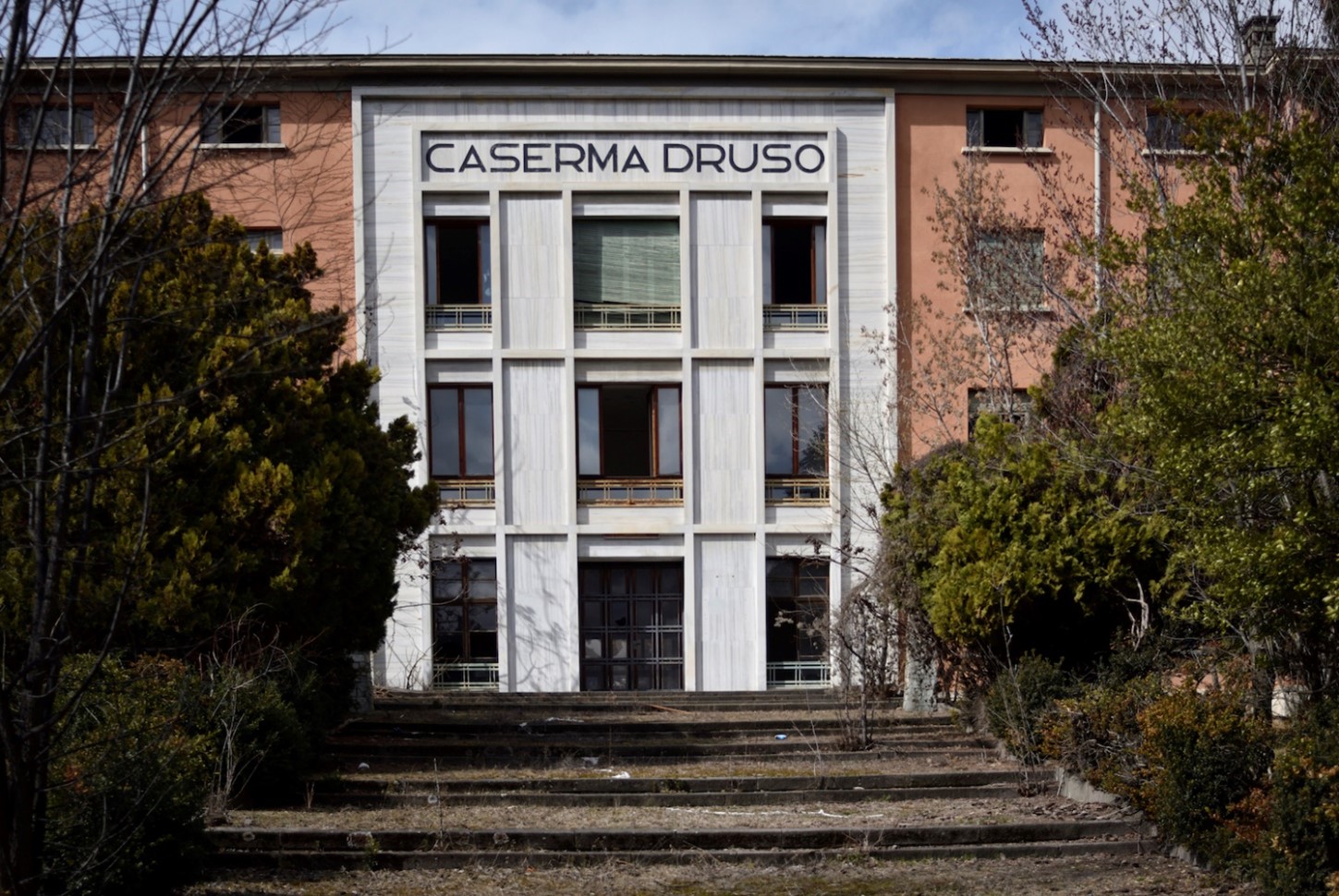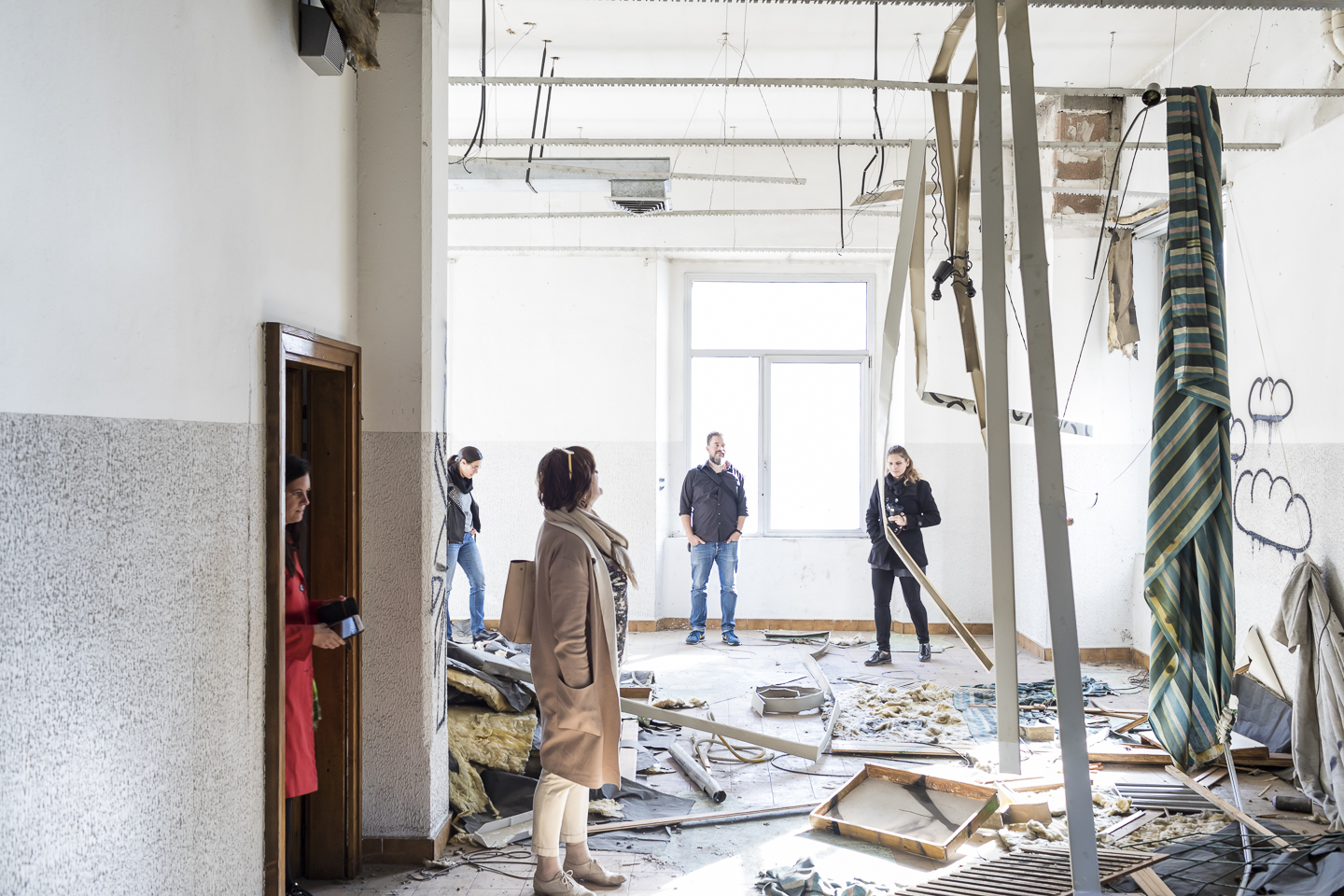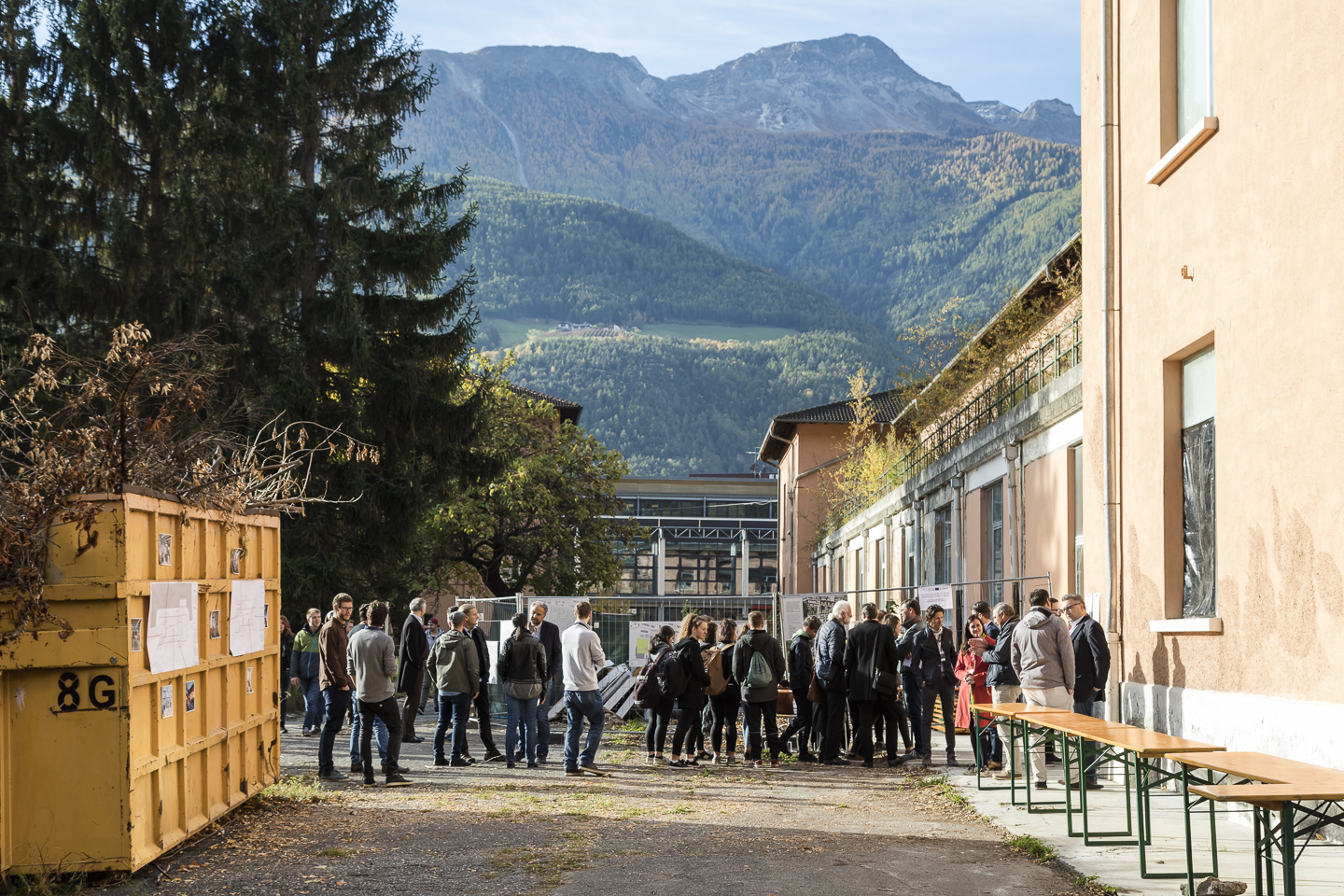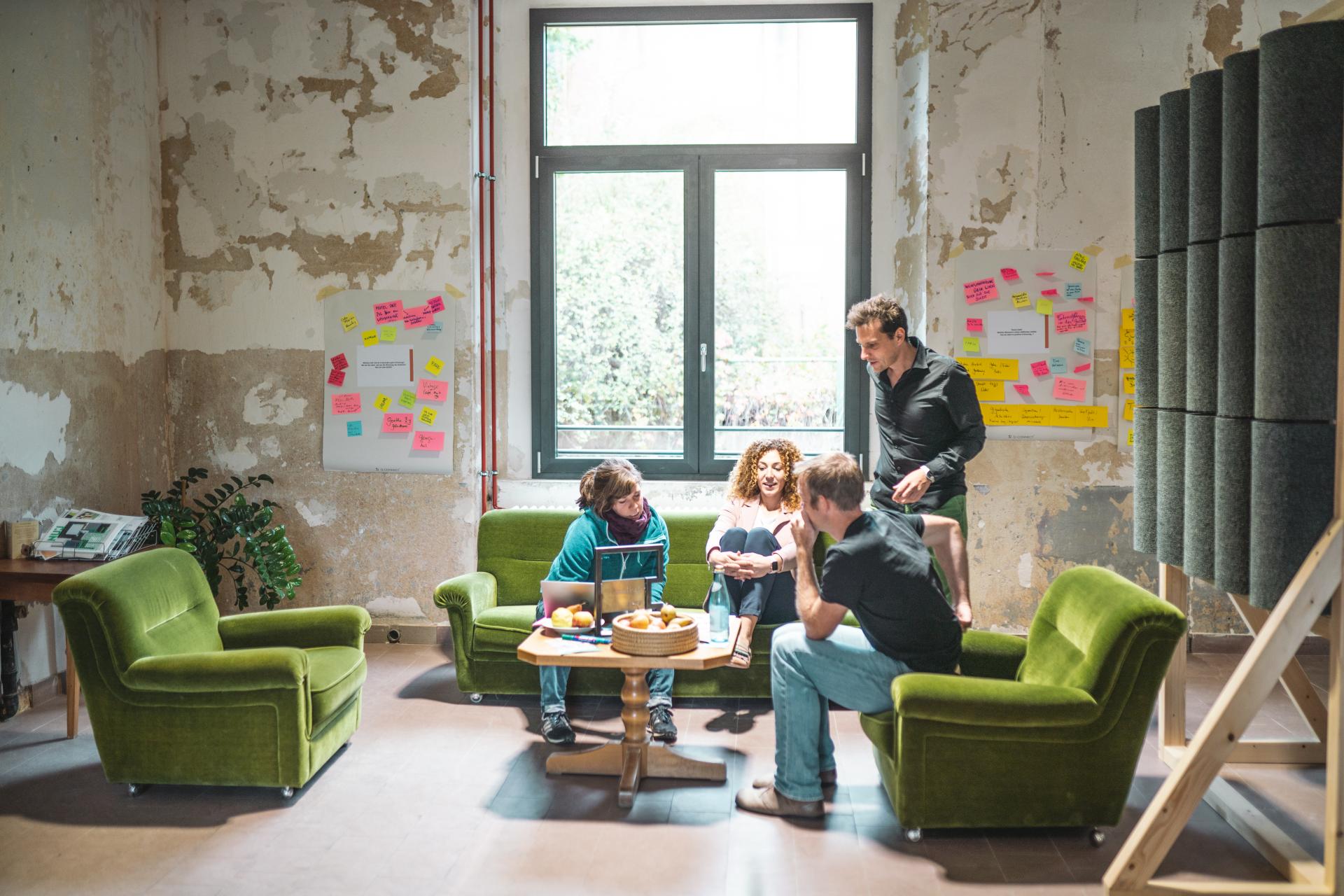BASIS Vinschgau
Basic information
Project Title
Full project title
Category
Project Description
BASIS Vinschgau Venosta is a Social Activation Hub, initiated as a community project of regeneration of the former military areal and barracks Caserma Druso in South Tyrol. BASIS Vinschgau Venosta offers spaces, community events, network facilitation, and educational formats to enable the exchange of experiences, shared learning, and practical ways of doing. In this way BASIS Vinschgau Venosta facilitates the goal of all people involved to experiment in the activation and building of new ideas.
Geographical Scope
Project Region
Urban or rural issues
Physical or other transformations
EU Programme or fund
Which funds
Description of the project
Summary
BASIS Vinschgau Venosta is a wide-ranging re-use project of the former military barracks in Silandro, a town in the rural alpine valley Val Venosta in South Tyrol, Italy. The project was launched to make the site of the barracks which have been empty since the mid-90s usable for the inhabitants of Silandro and the Venosta region and focuses on the themes of cooperative economy, education, cultural development, socio-ecological development, and flexible use of spaces for the whole community. This historically valuable space was the basis for the project which aims to show how regenerated heritage spaces can lead to a change in perceptions which is a focal point for rural development and activation.
A further important objective is to create an attractive and dynamic working environment for returnees and the local population thus counteracting to the phenomenon "brain drain" which is affecting the region over the last decades up until now. Through this location and networking platform, socio- ecological development in society and economy as well as innovation processes in the periphery will be driven forward.
BASIS is also a prototype of the 4th sector, connecting economy, culture, education and social affairs and shows that the sectors can learn from and mutually enrich each other if there is a common space for it. As a networking and exchange platform, BASIS is a pulsating place that works across generations, openly and practically, ready for discussion and exchange. Moreover, BASIS is “enabler” where theory is put into practice. People are motivated to experiment and to act with self-responsibility and bring their own ideas to the table.
Through cooperation and partnership, ideas are exchanged to stimulate. Joint projects and initiatives are promoted and a new link between civil society and research is made possible. This mutual learning in an experimental environment, also known as a real laboratory, represents a large part of the services offered by BASIS
Key objectives for sustainability
BASIS Vinschgau Venosta started as a rural regeneration project based on the circularity of materials and upcycling by implementing processes of reuse of the former Druso barracks. The regenerative process was not only the reconstruction of an abandoned building or a change of use of the space but a new way of conceiving a place in its entirety which connect past and present. The materials that constitute the Barracks have a strong link with the valley history, indeed the stones that make up the walls were extracted from a quarry specially created on the Sonnenberg in Schlanders in the 30s. It provided many local employment opportunities. A fundamental pillar of the project is the preservation of these materials and the conscious reuse to enhance the historical connection with the land. Basically, BASIS works on the Creative Workshop, which is dedicated to meeting the local demand for workshops and ateliers for artists, artisans, and carpenters. Community members actively participate in the renovation of spaces based on upcycling. They convert existing elements such as kitchen hoods, windows and air shaft cover, into furniture, like tables, dividers, shelves, …
Following a logic of sustainability, the reuse of these materials leads to the elimination of the transport of other materials and aims to generate local employment opportunities as well as the active involvement of local people in the interaction with a space of cultural heritage.
The objectives are to continue with the implementation, still largely unused, in the following ways: create workshops accessible to the local community for ceramics and printing. The printing workshop will offer the possibility of using historical present equipment and printing techniques like pad printing and screen printing. Moreover, efforts will be made to implement a lighting system for exhibition spaces for creatives to either provide more local opportunities or to create more variety cultural offerings for the citizens.
Key objectives for aesthetics and quality
The aspect of aesthetics in the project relates to the possibilities that the re-use of such peculiar spaces provides. The project is based on an architecturally significant historical construction, which has been transformed inside thanks to the collective action of the parties involved, allowing the autonomy to imagine ever different uses by the community. The term space takes on a special meaning for whoever uses it. The special characteristic of the rooms is to not be "prefabricated", which means room for new ideas and their implementation, and rooms for change over time, while still maintaining the atmosphere given by the original elements kept and enhanced. The result of which leads to spaces whose perfection is given by the reuse and its facets, thus creating an environment whose feeling is then given by spontaneity.
The presence of craftsmen and artists, sensitive to the influence of local tradition and the history of the building, contributes to the quality of the experience. In each construction process, local elements and materials are reconsidered, with attention to the symbolic transformation. This reappraisal of the architectural aspect is also made possible through the cooperation with the MA of Conceptual Architectural Heritage Preservation at the Donau University of Krems, which uses traditional craftsmanship techniques to experiment with innovative methods of conservation and fabrication.
In general, the aesthetic and experiential value of the project is embodied in the focus on the preservation of a historical space combined with its usability as a collective space open to the public. The project overcomes both the concept of musealization and the obsolescence of the so-called "sleeping giants", allowing the citizens to have a direct confrontation with history and to take part in an active transformation of meanings by putting them in direct enjoyment of beauty, which goes beyond the function without preventing its pursuit
Key objectives for inclusion
BASIS Vinschgau Venosta recognises that lack of open spaces offerings, and sites of informal gathering for individuals and groups lead to an impoverishment of interactions among the diversified actors living on the same territory, further causing the risk of having a fragmented community. Therefore, the project's goal is based on public participation since its beginning, initiated by receptive citizens. It is a catalyst for exchanges, allowing collaboration on different levels of involvement among a transdisciplinary and transgenerational community.
The encounters and informal gatherings are implemented through social participation and co-creation of the annual programme, encouraging participation through the establishment of working groups focused on suggested fields of interest. A special format is Stammtisch (dialect term for reserved table) which aims open discussions on relevant issues with citizens in venues across the village.
By proving flexible and modular spaces, the aim is to keep the available resources accessible and affordable for a wider audience, with a special attention to the sectors at risk in the territory. Part of the project is co-creating workshops with adequate equipment for handicrafts and production of digital content, and the construction of an experimentation space for the agri-food sector. In this sense, the adaptation of workspaces for members is an example of co-design. According to their needs and expertise they suggest new uses, providing new services to the whole community.
As enabler BASIS, offers training courses for the reintegration into employment of women and groups at risk, in collaboration with local experts. In the end, the objective of the project is not only to guarantee informal accessibility to the spaces, but also to give a thoughtful structure to the process of building social cohesion within the community.
Results in relation to category
The project BASIS Vinschgau Venosta started to give new life to the old military area Caserma Druso in Silandro-Schlanders. Built between 1937 and 1942 during the Italian fascist regime, the last military uses were at the end of the 1990s. It was the initiative of the founders of the project, who were actively engaged in including citizens in the implementation of the project, that began a process of bringing citizens closer to the place that had been abandoned and closed for years. The most relevant impact is to change people's perception of a place of such political and social impact in history as to reappropriate a territory that in the past has been a victim of cultural oppression of identity and to transform into a place of inclusion, freedom and involvement of people.
The result of regaining a sense of belonging is the reestablishment of the connection between place and citizens that has been lost over the past decades. Basically, over the last few years the project has achieved direct results on impacting the local area in this regard. The approach is (g)local and has been one of the precursors to stimulate young people not to leave the area because BASIS has created an offer of stimulating job opportunities.
According to the results collected during 2021, more than half of the team and coworking members claim that the services offered by BASIS are an incentive to stay/return to Val Venosta. Additionally this project has favored the artistic and cultural side: 95% of the users of the ateliers believe that they have found a structure that fosters collaboration and mutual support. Furthermore, 88% of the artists and craftsmen have carried out projects in collaboration with other users. That leads to reduced valley depopulation and gentrification.
Finally, spontaneous establishment of groups of volunteers who actively work to ensure the preservation of the spaces of the former barracks is an important indicator of the relevance of this place for citizens
How Citizens benefit
Looking at the context and needs that led to the creation of BASIS Vinschgau and its mission, engagement with Schlanders-Silandro's civil society constitutes a systemic and substantive effort in evaluating the project's performance. There is an ongoing exchange between BASIS, the multiple systemic scales surrounding, the old military barracks, the new circumstances, the breaking down of barriers and the creation of meaning beyond the history of the building.
On the microsystem scale BASIS Vinschgau engaged its team, collaborators, artists and builders in a dialogue of positive relationships, emphasizing personal growth, purpose in life as well as the meaning of competence and autonomy of action toward sustainable development.
Volunteer groups, experienced valley architects, associations and citizens were called upon to express opinions on a mesosystem scale where networked participatory learning fosters social coherence and equality and the integration of marginalized environments. Preliminary events were organized where the site was opened to the public engagement before the actual reuse project began, giving input to civil society to ask questions about the city's development.
Moreover, BASIS engaged on an exo-systemic scale directly with political parties, policy development and various research institutions such as EURAC Research, NOI Techpark and the Free University of Bolzano to ensure that many aspects of civil society were included in the synergies. Active exchange and participation in the regional debate on future change is an important pillar in long-term strategic decision-making.
To date, civil society is interested in BASIS Vinschgau in the sense of recognizing itself as a place culturally and actively responsible for shaping the future. This has been facilitated by the project and its added value of being able to express themselves through the unconditional renovation of an old building according to their own preferences
Physical or other transformations
Innovative character
BASIS’S greatest innovation is to bring together the entrepreneurial, artistic, craft, musical and social dimensions under one roof. The project actively works across economic, educational, cultural and social sectors. The aim is to directly promote the diversification of skills and the economy, making it more resilient and sustainable for a more inclusive future.
BASIS Vinschgau Venosta has created a coworking space, FabLabs, art residencies, meeting rooms, ateliers, learning studios and a house for concerts and congresses. Thus, it works against the fragmentation between rural and urban, against the brain drain that is affecting the region, creating spaces for those creative professions that would otherwise flee the rural context. BASIS, in its function as a start-up centre and incubator of innovative ideas, wants to be a pioneer of the classic business parks as it is open to different, sometimes conflicting, sectors.
What distinguishes BASIS is the added value given to people. It is only through openness to innovative inputs and giving direct impulses to encourage self-responsibility that ideas find support through international networking and know-how. The focus is not on achieving perfection but on learning by doing. A clear focus is also placed on areas such as the creative industries, crafts and the arts, for which BASIS adopts the Triple Layered Business Model Canvas which supports sustainable business model innovation based on the principles of regenerative economy. Basically, the management of surplus capital is in continuous reinvestment in human capital and capital that develops social impact and a sustainable return. All related to a context of horizontal coherence decision and bottom-up approach (Do It Together). This is an example of an approach on how BASIS creates synergies between people of different ages and backgrounds in community based on a flat hierarchy
Learning transferred to other parties
Considering project replicability and transferability as a transformative space identity to create focal points of social, cultural, economic and innovative activation is of fundamental importance to BASIS, as its experimental trait is embedded in its corporate philosophy. It has developed a range of knowledge-intensive services in the periphery and support with public and private entities to conduct research and co-create with local start-ups or established companies in product and process innovation.
In practice, it encourages cooperation and networking with stakeholders and regional companies while also enabling the transferability of processes and results. Start-up or local companies, due to the aridity of the innovative environment of the valley, would tend to turn to the outside, thus losing the connection with the territory and its development. The use of quality methods also called quality techniques, quality procedure serve BASIS for the improvement of product or process properties of the organizations and in the development and support of pilot projects, in a synergetic effect to continuous improvement of its internal processes as well as to include learning from past projects and improvements for future ones.
The project ideas constitute also a protype that can therefore be implemented in similar areas. Moreover, BASIS itself has a strong potential for replicability because firstly the number of former fascist military barracks on the national territory is very high, so there are many opportunities that have potential to become centres of local activation and accelerator of territorial development. Secondly, the change in the perception of places that have had such a strong historical impact on the lives of citizens. Therefore, it wants to be a model for the transformation of these places of a war and oppression marked past into poles of a resilient society that increases the social, sustainable and innovative impact of the territory




